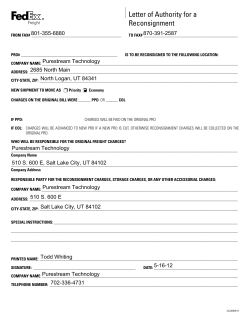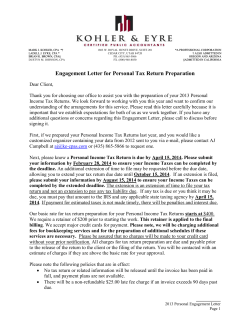
Learning Skills Center UC Davis Jim Hollister
Learning Skills Center UC Davis Jim Hollister Oxidation State, Formal Charge and Dipole Moment oxidation state (or oxidation number)— A simple assignment of charge to an atom or ion based on a prescribed set of rules without consideration of the number of bonds or electrons on the atom or ion. Oxidation state is determined as though all bonds were ionic in character. Oxidation state is helpful to quickly determine the state of oxidation or reduction of the species. It is calculated directly from the compositional formula; you do not need the Lewis Structure. Example: MnO2 O is -2, so Mn must be +4. Formal charge — An approximation method to show charge distribution of an atom in a molecule or ion. The formal charge of the molecule or ion is the sum of the formal charges of the individual atoms of the species. The formal charge of an atom is the net charge right around the atom. The charges are assigned on the assumption that there is perfect non-polar covalent bonding: electrons are shared equally. Formal charge uses information about single bonds, multiple bonds and octet and non-octet structures and it therefore depends on the particular Lewis structure written. Formal charges are not actual charges but simply an "electron bookkeeping" method that helps us choose a probable Lewis structure. (It could be said that formal charges are charges which arise whenever atoms have not contributed equal numbers of electrons.) Formal charge is the difference between the # of valence electrons in a free (uncombined) atom and the electrons assigned to that atom in a Lewis structure. The formula for calculating formal charge is: FC = V - [1/2(shared e-s ) + !unshared e-s] sticks dots FC = Formal charge V = valence electrons e-s = electrons 1. For the major contributing form of a Lewis structure, prefer a form with the lowest formal charges on its atoms (the minimum charge separation) Give each atom only an octet** (except for H, a duplet or duet, and Li, Be and sometimes B which can be electron deficient). 2. The formal charge of the ion or molecule is the sum of the formal charges of all of the atoms. 3. Structures having formal charges of the same sign on adjacent atoms are unlikely. **However, with expanded valence shells (greater than 8 e-s around an atom), you may be able to get even lower formal charges and some consider these Lewis structures major contributors. What I would do: I'd also show expanded valence shell structures when legitimate (atoms in period 3 or higher) if they have low formal charges. Example: N N major O N N minor O The major contributing form is the resonance structure at the left above: it has a -1 formal charge on oxygen, whereas the resonance structure on the right is a very minor contributor as it has a 0 (zero) formal charge on the oxygen. (Your text or professor may say the minor contributor shown here is not the correct Lewis structure; actually, it just does not follow guideline 1 above, i.e., oxygen is more electronegative than nitrogen). Dipole moment — The actual distribution of charge represented with + and - delta (δ) symbols or with an arrow pointing from the more positive end to the more negative end: !" O O or C C !+ H H H H A dipole moment is seen in molecules which have a polar covalent bond. The actual dipole moment must be measured experimentally. It can then be calculated and is measured in units called debyes (D). The Greek letter mu, µ, represents the electric dipole moment. µ = Qr Q = the magnitude of the partial charge; it can be a positive or negative value. r = the distance between the charges. You probably will not be asked to calculate an electric dipole moment, but you should be able to indicate individual bonds which have dipole moments, and also if a whole molecule has a net dipole moment. You need to consider the molecule’s geometry to do this. The above molecule is trigonal planar (AX3) and has a net dipole moment with the negative pole at the oxygen end. It is a polar molecule.
© Copyright 2025





















